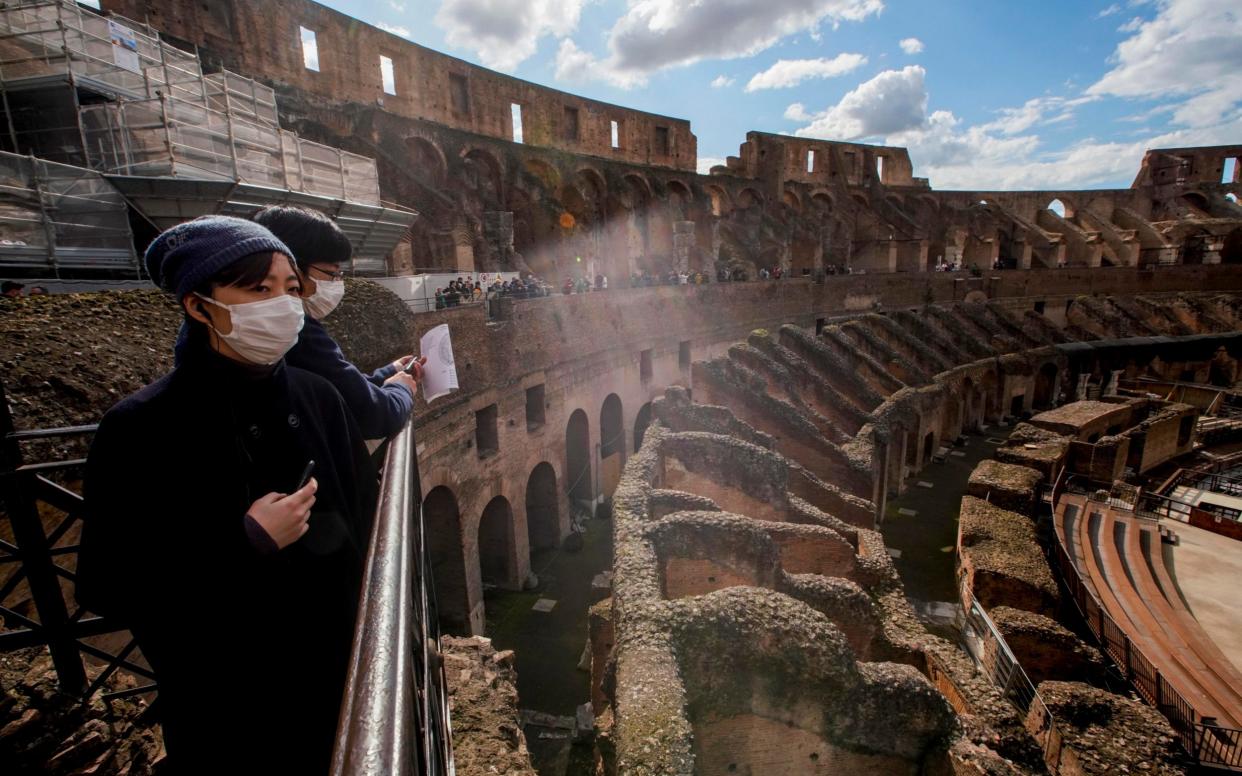Italy locks down 16 million people in the north in drastic bid to curb coronavirus spread

Italians reeled from a shock decision by government leaders Sunday to close down a vast swath of the northern half of the country, affecting 16 million people, in a bid to stop the rapid spread of coronavirus.
Giuseppe Conte, the Italian prime minister, signed a decree early Sunday morning enacting quarantine measures that will affect the region of Lombardy, including the city of Milan, as well as 14 other provinces. It is the first such measure outside China, where the virus originated.
"For Lombardy and for the other northern provinces that I have listed, there will be a ban for everybody to move in and out of these territories and also within the same territory," Mr Conte said.
Though the decree does not call for an absolute ban on movement, it dramatically reduces mobility and imposes a host of new activity restrictions in Lombardy, and the provinces of Venice, Parma, Modena, Piacenza, Reggio Emilia, Rimini, Pesaro and Urbino, Alessandria, Asti, Novara, Verbano Cusio Ossola, Vercelli, Padua and Treviso.
Some travel will be allowed for serious work, family and emergency reasons.
“We have made this decision with lucidity, courage and determination,” Mr Conte said, urging the country to remain calm and follow the new guidelines for the health and safety of the nation, and in particular Italy's vulnerable elderly population.
The surprise decision comes as Italy registered one its most dramatic spikes in cases of the virus, officially known as Covid-19, since the outbreak began 10 days ago.
More than 5,883 cases have been confirmed, an increase of more than 1,200 between Friday and Saturday, with civil protection authorities saying the number included 5,061 infected, 589 who have fully recovered, and 233 deaths.
There was chaos and confusion in the hours before Conte signed the decree, as word leaked to the news media about the planned quarantine.
Students at the University of Padua in northern Italy who had been out at bars on a Saturday night saw the rumors on their cellphones and rushed back to their apartments to grab their belongings and head to the train station.
On Saturday, centre-Left Democratic Party leader Nicola Zingaretti announced he had tested positive for coronavirus, setting off a wave of tests and self isolation among top political leaders and media personalities with whom he had met in recent weeks.
Health officials hope the new measures will slow the spread of the deadly virus to Italy’s more marginalised southern regions and prevent further strain on hospitals, which in the hardest-hit regions of the north are already struggling to keep up with demand for beds in intensive care units.
A number of mayors of towns and cities in the impacted area immediately protested the measures, however, after a draft of the decree was leaked late Saturday to Italian media before government leaders had formalised the closures or informed public officials in the impacted areas.
A final chance to evacuate from the COVID19 red zone. People rush to catch the last trains leaving Lombardy after government declared the quarantine and lockdown of 16 million people in Northern Italy. The mandatory quarantine will last until early April. pic.twitter.com/9m5Sf7nuhH
— Max Howroute▫️ (@howroute) March 8, 2020
Residents caught by surprise Sunday were scrambling to change travel plans in and out of the impacted regions.
“This is no way to do things. Its crazy,” Asti’s furious mayor Maurizio Rasero told Turin’s daily newspaper La Stampa after hearing his city’s name on the list on the evening news late Saturday.
The expanded quarantine area has wide ranging implications, with not just reduced mobility, but also some restricted store hours, bans on social and sporting activities, including gyms, pools and discos, as well as reduced religious ceremonies, including weddings and funerals.
Police will be authorised to impose fines on those flaunting the restrictions for entering or leaving the restricted areas, but details have yet to be released on how, exactly, the closure measures will be managed on the ground.
The decree, set to be formally adopted Monday, is valid through April 3, and also extends school closures across Italy through that date.

